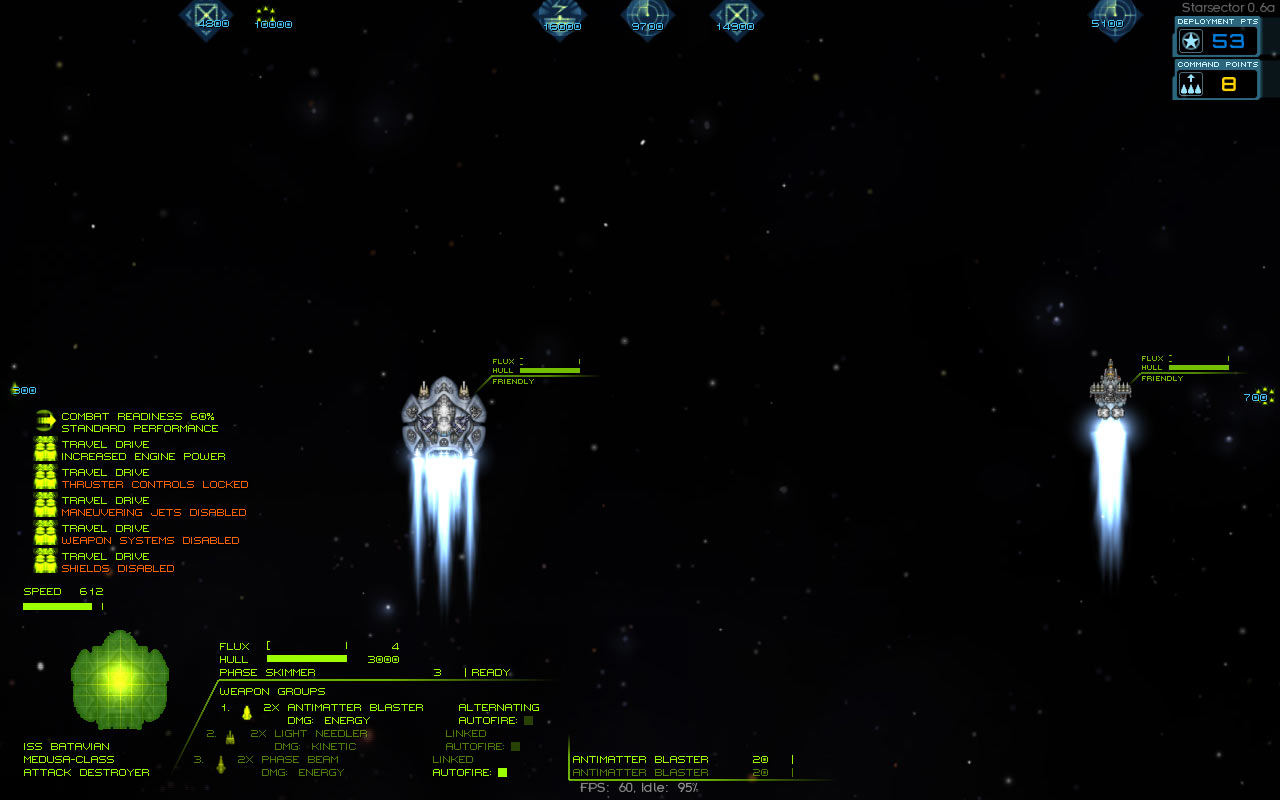Fleet Encounter Mechanics, Part 2
Part one is here. If you haven’t read it, it provides context for what I’m going to talk about here.
Travel Drive
Conceptually, ships use a different, much faster means of transportation for travel than they do for battle. Presumably, they either have to pop out of it every so often to navigate, or are forced to slow down by targeted nav system interference/debris fired across the projected trajectory/need to divert engine power to defensive systems due to the threat of enemy fire/<insert your favorite technobabble here>. Personally, I’m in favor of it being some kind of nav interference, whether it’s due to hypervelocity debris or jamming. The point is, a fleet can be forced to slow down and engage in battle.
On the flip side, a fleet disengaging from battle means that they’ve been able to re-engage their travel drives and put on speed. Maybe the nav computers finally calculated a safe trajectory. Maybe enough distance has been gained to eliminate the threat of enemy fire. The concept was always there, even if it wasn’t directly explored in the gameplay.
But now, there’s an opportunity to use it to improve the experience. With that in mind, the new mechanics:
- A ship or fighter wing being deployed into combat comes in with travel drive on, and it remains on for about 5-6 seconds – enough time to move around 3 grid squares in the command screen
- A retreating ship or fighter wing engages travel drive when it gets to within a couple grid squares from the border it’s heading for to make its getaway

A Medusa and a Wolf entering battle with Travel Drive (possibly pending cooler name) on.
This does a couple of things, all of them to do with reducing the impact of borders on gameplay. One, maps can be bigger without battles taking too long to heat up, because the extra space around the border is traversed very quickly using travel drive. This extra padding means objectives – which fighting often centers around – can be much farther away from borders. Two, retreating ships separate from pursuit far away from the border, almost entirely eliminating the “chase ship all the way to a border” situation.
Read the rest of this entry »






















